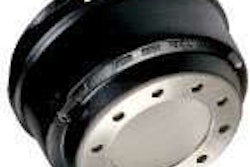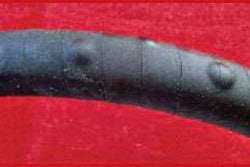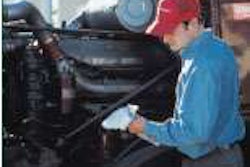There are two types of input shaft failures, 45 degree angle fracture and star fracture. According to Roadranger, a 45 degree fracture is the result of an extreme torque spike. The torque spike causes a surface crack that grows over time. As the crack grows, it weakens the shaft until it cannot transfer torque, then it fractures.
The root cause of a 45 degree input shaft fracture is believed to be aggressive lever shifts or splitter shifts — a shift completed out of the rpm synchronous range for a normal shift. This could include a shift where the lever is forced into gear or a splitter shift that is not selected properly. (See Figures 1 and 2.) Another possible cause of a 45 degree fracture is spinning tandem wheels coming into contact with pavement causing an extreme torque spike.
A star fracture results from a shaft being subjected to continuous operation at or near the design limit of the shaft strength, Roadranger says. These cracks often start below the surface.
A star fracture is the result of operating the vehicle at the engine’s maximum torque for extended periods of time, according to Roadranger. (See Figures 3, 4, 5 and 6.)
 Figure 1: In a 45 degree fracture typically there will be secondary damage to the shaft diameter just forward of the input bearing and the main drive gear drive spline ends are rounded.
Figure 1: In a 45 degree fracture typically there will be secondary damage to the shaft diameter just forward of the input bearing and the main drive gear drive spline ends are rounded.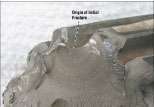 Figure 2: In this close-up of the rearward end of the fracture, you can see the fracture began at the bottom of a spline root and progressed slowly across the diameter of the shaft at a 45 degree angle.
Figure 2: In this close-up of the rearward end of the fracture, you can see the fracture began at the bottom of a spline root and progressed slowly across the diameter of the shaft at a 45 degree angle.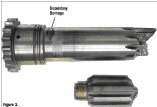 Figure 3: This photo shows typical secondary damage caused by the input shaft being driven by the vehicle and flailing around due to lack of restraint.
Figure 3: This photo shows typical secondary damage caused by the input shaft being driven by the vehicle and flailing around due to lack of restraint.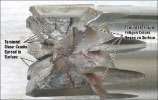 Figure 4: The area rearward of the clutch engagement area and forward of the end of spline full depth is the area of highest stress on the shaft.
Figure 4: The area rearward of the clutch engagement area and forward of the end of spline full depth is the area of highest stress on the shaft.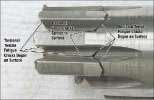 Figure 5: Torsional shear cracks and surface initiated torsional tensile fatigue cracks are visible.
Figure 5: Torsional shear cracks and surface initiated torsional tensile fatigue cracks are visible.

